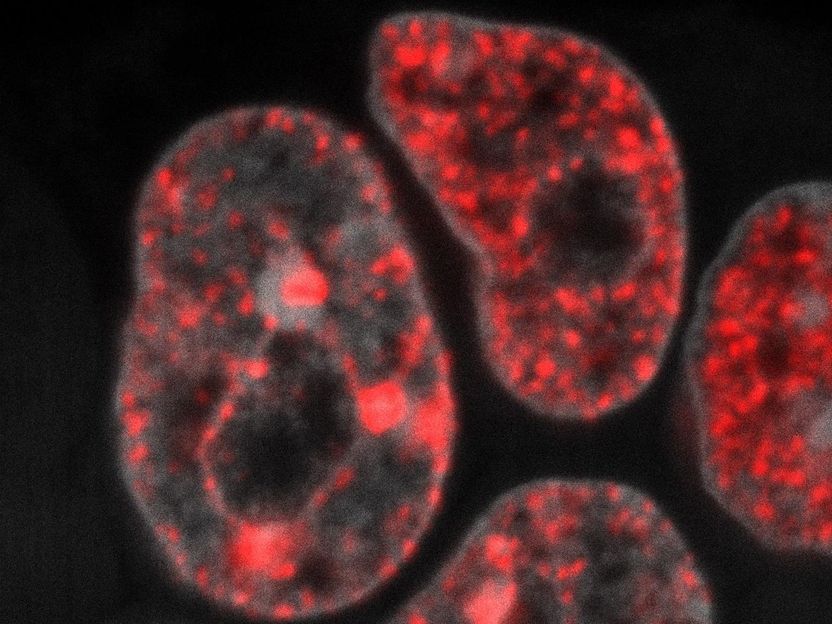A Speed Limit Could Be a Breakthrough for Stem Cell Therapy
Less speed, improved cellular reprogramming
Replacing sick or damaged cells with healthy cells: this is a major goal of regenerative medicine. One of the most promising approaches is cellular reprogramming, whereby one cell type in our body converts to another cell type. Research carried out at Helmholtz Munich and Ludwig-Maximilians-Universität München has discovered new ways to improve the cellular reprogramming efficiency, unlocking potential for cellular repair therapies.

DNA replication in mouse embryonic stem cells (red: newly synthesized DNA)
Helmholtz Zentrum München / Tsunetoshi Nakatani
Adult cells in our body can only give rise to the same cell type. For example, a skin cell cannot give rise to a muscle cell but to skin cells only. This limits the potential use of adult cells for therapy. During early development, however, the cells in the embryo have the capacity to generate all cell types of our body, including stem cells. This capacity, which is called totipotency, has served as an inspiration for researchers to find new ways to recapitulate totipotency through cellular reprogramming in the lab.
Totipotent cells have their own speed
Totipotent cells have many properties, but we do not know all of them yet. Researchers at Helmholtz Munich have now made a new discovery: “We found out that in totipotent cells, the mother cells of stem cells, DNA replication occurs at a different pace compared to other more differentiated cells. It is much slower than in any other cell type we studied,” says Tsunetoshi Nakatani, first-author of the new study.
DNA replication, in fact, is one of the most important biological processes. Throughout the course of our lives, each time that a cell divides it generates an exact copy of its DNA so that the resulting daughter cells carry identical genetic material. This fundamental principle enables faithful inheritance of our genetic material.
The researchers discovered that the speed of DNA replication is also low in totipotent-like cells, which scientists can culture in a petri dish. Tsunetoshi Nakatani adds: “This led us to the question: If we manage to change the speed at which DNA replicates, can we improve the reprogramming of cells into totipotent cells?”
Less speed, improved cellular reprogramming
In an outstanding experimental effort, the researchers observed indeed that slowing down the DNA replication speed – for example by limiting the substrate that the cells use for DNA synthesis – increases reprogramming efficiency, that is, the rate at which cells can convert to another cell type.
“This is amazing,” says Maria-Elena Torres-Padilla, the leader of the study. “Over the years, we have been studying totipotent cells in order to learn how nature has made them so incredibly capable of generating all cell types of our bodies. This is a fundamental strategy of our research towards regenerative medicine approaches. This new concept is very simple, yet extremely important and we believe that it is a huge advance for stem cell therapy.”
Original publication
Other news from the department science

Get the life science industry in your inbox
By submitting this form you agree that LUMITOS AG will send you the newsletter(s) selected above by email. Your data will not be passed on to third parties. Your data will be stored and processed in accordance with our data protection regulations. LUMITOS may contact you by email for the purpose of advertising or market and opinion surveys. You can revoke your consent at any time without giving reasons to LUMITOS AG, Ernst-Augustin-Str. 2, 12489 Berlin, Germany or by e-mail at revoke@lumitos.com with effect for the future. In addition, each email contains a link to unsubscribe from the corresponding newsletter.


















































